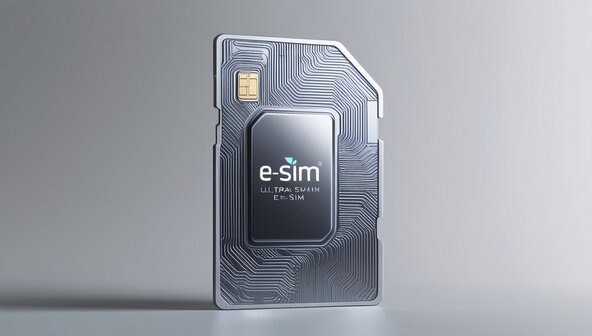Setting Up 5G Network in 4G Mobile: Complete Guide
The world is moving fast with new mobile tech. The shift from 4G to 5G is a big deal. In India, people are excited to try out 5G. This guide will help you set up 5G on your 4G phone. We’ll cover how to make sure it works well and tips for a smooth upgrade.
Key Takeaways
- Understand the compatibility between 4G and 5G networks
- Identify the device requirements for 5G connectivity
- Ensure your mobile network provider supports 5G in your region
- Perform necessary software updates and SIM card compatibility checks
- Optimize your device settings for enhanced 5G performance
Understanding 5G Network Compatibility with 4G Devices
As we move from 4G to 5G, knowing how they work together is key. 5G brings faster speeds and better connectivity. But, it’s important to make sure 4G devices can use 5G smoothly.
Differences Between 4G and 5G Technology
4G uses LTE technology, offering speeds up to 100 Mbps. On the other hand, 5G uses new tech like millimeter waves for speeds up to 10 Gbps. This means 5G can handle more devices and support heavy apps like virtual reality.
Device Requirements for 5G Connectivity
- 5G-compatible smartphone or device: You need a 5G-enabled device, like the latest smartphones, to use 5G.
- 5G-ready SIM card: You also need a 5G-compatible SIM card to connect to 5G.
- Network coverage: Make sure 5G is available in your area. Providers are adding more 5G spots, but it’s still limited in some places.
Network Band Compatibility Check
To get 5G working right, check if your device and the 5G network in your area match. Different places use different 5G bands. Your device must support the bands your provider uses. Talk to your provider or check your device’s specs to see if it’s compatible.
Knowing the tech differences, what devices need for 5G, and the importance of band compatibility helps users smoothly switch to 5G. This way, they can enjoy the benefits of this new technology.
How do I set up a 5G network in a 4G mobile?
Switching from 4G to 5G on your phone is easy. It unlocks the latest tech’s full power. Just follow a few steps to set up a 5G setup process on your 4G phone. You’ll enjoy super-fast speeds and better connectivity.
First, make sure your phone can use 5G. Talk to your network provider to check if your phone supports 5G. They’ll also tell you which mobile settings to change.
- Update your phone’s software to the latest version. This makes sure your phone can use 5G.
- Go to your phone’s network settings and find the 5G option. It might say “5G mode” or something like that.
- Choose the right 5G network band for your device and area. This ensures the best performance and network configuration.
- Save your changes and let your device connect to the 5G network. You might need to restart your phone for it to work.
By following these steps, you can easily switch your 4G phone to 5G. Enjoy the fast speeds and new features of 5G technology.
“The 5G setup process is a game-changer, offering blazing-fast speeds and enhanced connectivity that will transform the way you use your mobile device.”
Essential Requirements Before 5G Setup
Starting your 5G journey means making sure your device and network are ready. Before you begin, there are key steps to take.
Checking Mobile Network Provider Support
First, check if your mobile network provider supports 5G. Contact your provider to learn about their 5G plans, coverage, and device needs. This ensures your current plan and device work with 5G.
Required Software Updates
Your device might need the latest software updates for 5G. Check with your device maker or network provider for updates. These updates improve 5G performance and fix bugs.
SIM Card Compatibility
Also, consider SIM card compatibility. You might need a 5G-compatible SIM card. Talk to your provider to see if your current SIM works with 5G or if you need a new one.
| Requirement | Details |
|---|---|
| 5G Network Support | Ensure your mobile network provider offers 5G services in your area and that your device is compatible. |
| Software Updates | Install the latest software updates on your device to ensure optimal 5G performance and compatibility. |
| SIM Card Compatibility | Upgrade to a 5G-compatible SIM card if required by your network provider and device. |
By meeting these requirements, you’re ready for a smooth 5G experience on your 4G device.
Common Challenges When Connecting to 5G Networks
Many users are excited to try 5G technology. It promises better connectivity and faster speeds. But, using 4G devices with 5G networks can be tricky. Let’s look at the main problems and find ways to solve them.
Signal Strength and Coverage Limitations
Users often face weak 5G signal strength and limited coverage. This can happen for many reasons. These include the lack of infrastructure, physical barriers, and device compatibility. Here are some tips to boost signal strength and coverage:
- Check with your mobile network provider for the latest 5G coverage maps and updates on infrastructure expansion in your area.
- Look for signal-blocking obstacles, like buildings or dense foliage. Try moving your device to get better reception.
- Make sure your 4G device supports the 5G network bands in your area. Compatibility can differ between models and regions.
Intermittent Connectivity and Dropped Calls
Users might also face intermittent connectivity and dropped calls when switching between 4G and 5G. This is often because of network protocol differences. To fix these problems, try these steps:
- Choose the 5G network mode on your device, if it’s an option, to avoid switching between 4G and 5G.
- Keep your device’s software and firmware updated. This might include network troubleshooting tools and better 5G integration.
- Reach out to your mobile network provider for help on setting up your device for smooth 5G connectivity.
By tackling these 5G connectivity issues, users can have a better experience with 5G technology.
Optimizing Your Device for 5G Performance
To get the most out of 5G on your 4G device, you need to optimize it. Adjusting your device’s settings can improve battery life, manage network, and control data. This ensures a smooth and efficient 5G experience.
Battery Optimization Settings
Using 5G can drain your battery faster. To save battery, check your device’s settings. Turn on power-saving modes, limit app activity, and lower screen brightness. This balance helps your battery last longer.
Network Mode Selection
Choosing the right network mode boosts 5G performance. Learn about your device’s network options. Pick the best one for you, like 5G-only or 4G/5G. A dynamic mode can automatically choose the best network.
Data Usage Management
5G’s fast speeds mean you might use more data. To manage this, monitor your data, set limits, and use data-saving features. This way, you enjoy 5G without going over your data plan.
FAQ
What is the difference between 4G and 5G technology?
4G and 5G differ in speed, latency, and bandwidth. 5G is much faster, has lower latency, and can handle more devices than 4G.
What are the device requirements for 5G connectivity?
For 5G, your device must be 5G-compatible. It needs a 5G chipset, modem, and the right software.
How do I check the network band compatibility for 5G?
Check if your device can connect to 5G by verifying band compatibility. Make sure your device’s 5G matches your network provider’s bands.
What steps do I need to follow to set up a 5G network on my 4G mobile device?
To set up 5G on a 4G device, first check if your provider supports 5G. Then, ensure your device is compatible and update its software. Finally, adjust your device’s network settings.
What are the essential requirements before setting up a 5G network?
Before setting up 5G, confirm your provider supports it in your area. Also, check if your device and SIM card are compatible with 5G.
What are some common challenges when connecting to a 5G network?
Challenges with 5G include weak signals, limited coverage, and device compatibility issues. These can affect your 5G’s reliability and performance.
How can I optimize my device for better 5G performance?
For better 5G, adjust battery settings, choose the right network mode, and manage data use. This ensures you get the most from 5G.






